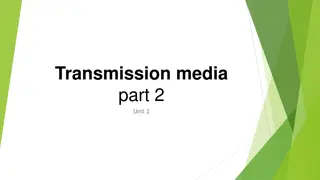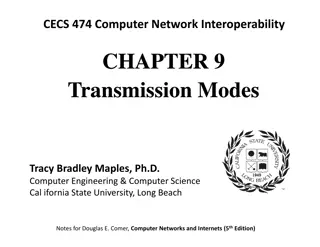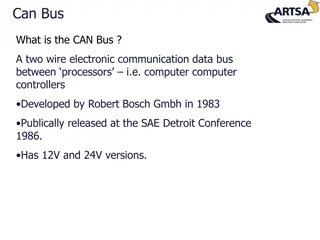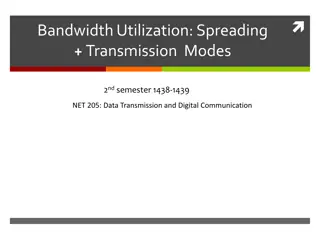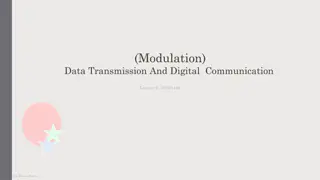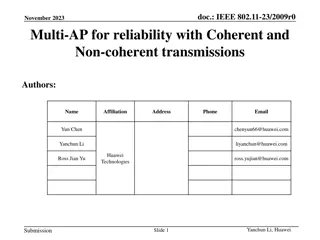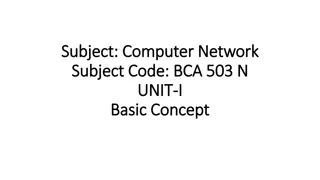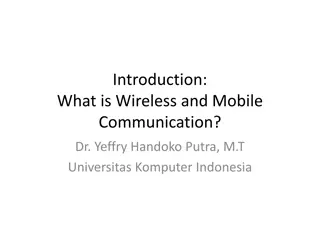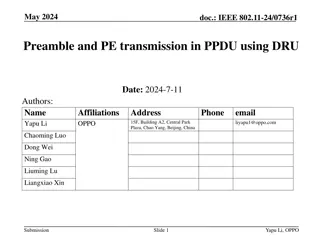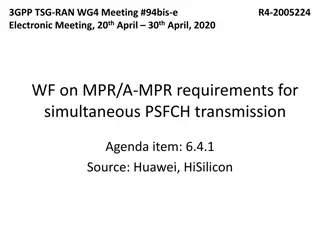Data Communication and Transmission Basics
Data communication involves the exchange of information between users using various transmission media such as cables, optical fibers, and radio waves. This includes understanding transmission media, data transfer rates, bandwidth, and classification of transmission media. Learn about baud, bits per second (bps), and the measurement units used in data transfer. Explore the concept of bandwidth and its role in transmitting data across networks.
Download Presentation

Please find below an Image/Link to download the presentation.
The content on the website is provided AS IS for your information and personal use only. It may not be sold, licensed, or shared on other websites without obtaining consent from the author.If you encounter any issues during the download, it is possible that the publisher has removed the file from their server.
You are allowed to download the files provided on this website for personal or commercial use, subject to the condition that they are used lawfully. All files are the property of their respective owners.
The content on the website is provided AS IS for your information and personal use only. It may not be sold, licensed, or shared on other websites without obtaining consent from the author.
E N D
Presentation Transcript
DATA COMMUNICATION TERMINOLOGIES
INTRODUCTION Data -> information Communication -> exchange information between two or more users. Data Communication Exchange of data between two or more users through the transmission media like twisted pair cable,coaxial cable,optical fibers,radio wave,satellite,microwave etc..
TRANSMISSION MEDIA Transmission media is a communication channel that carries the information from the sender to the receiver. Data is transmitted through the electromagnetic signals.
Data Channel Data Transfer Rate Baud Bits per second(bps) Bandwidth Data Channel: Physical medium like cables over which information is exchanged is called channel. (Or) Channel is the medium used to carry information or data from one point to another.
DATATRANSFER RATE It determines the rate of speed at which the data is transferred from one point to another. Its measurement unit is bits per second(bps),Bytes per second(Bps),or baud.In computer, data transfer is mainly measured in Bytes per second.
CONTD. Baud: It is the unit of measurement for the information carrying capacity of communication channel. The baud synonymous with bps(bits per second). It is a another unit of measuring data transfer rates. Bits per second(bps): It refers to the speed at which the data transfer is measured. Thousand bits per second is known as kbps ie.,kilo bits per second(Small k in kbps) Thousand bytes per second is known as Kbps ie.,Kilo bytes per second( Capital K in Kbps)
CONTD.. 1Bps=1 Byte per second=8 bits per second 1 Kbps=1 Kilo bit per second=1024 bits per second 1Mbps=1 Megabit per second=1024 Kbps 1Gbps=1 Gigabit per second=1024 Mbps kilo- , mega- , giga- , tera- , K , M , G , T -- it denotes powers of 1000 For eg: 64kbps= 64000 bps
BANDWIDTH Bandwidth is the capacity of a wired or wireless network connection link to transmit the maximum amount of data from one point to another over a computer network or internet connection in a given amount of time usually in one second. 1.For eg: it takes more bandwidth to download a photograph in one second. 2.Large sound files,computer programs and animated videos requires still more bandwidth for acceptable system performance.
CONTD High bandwidth channels are called broadband channels. Low bandwidth channels are called narrowband channels. Frequency is measured in cycles per second(hertz) Voice signal has the bandwidth of approximately three kilohertz(3 KHz) An analog television (TV) broadcast video signal has the bandwidth of six megahertz(6 MHz)- 2000 times as wider as the voice signal.
CONTD Kilohertz(KHz)-Thousand cycles per second Megahertz(MHz)-Thousand KHz Gigahertz(GHz)-Thousand MHz Terahertz(THz)-Thousand GHz





